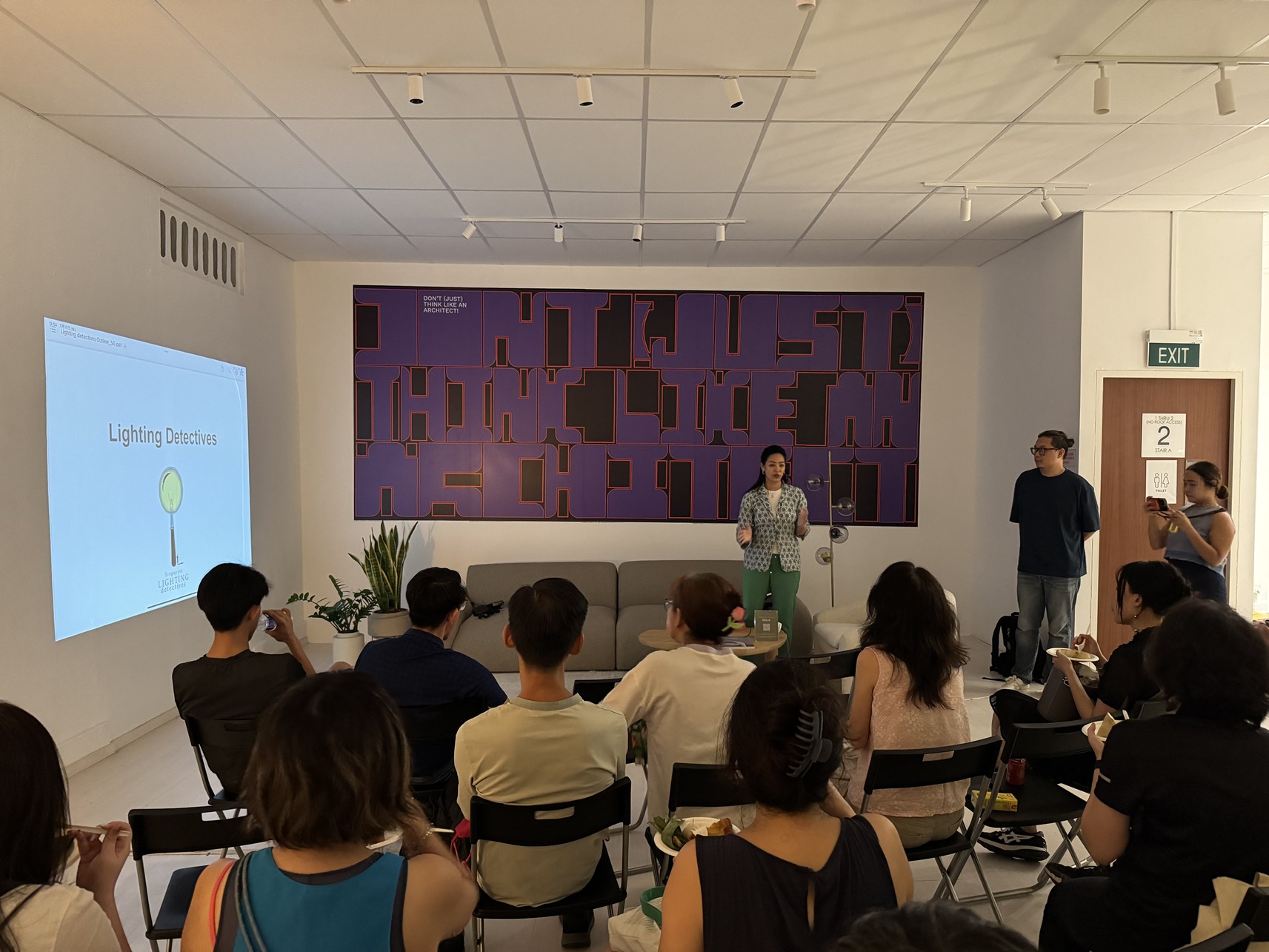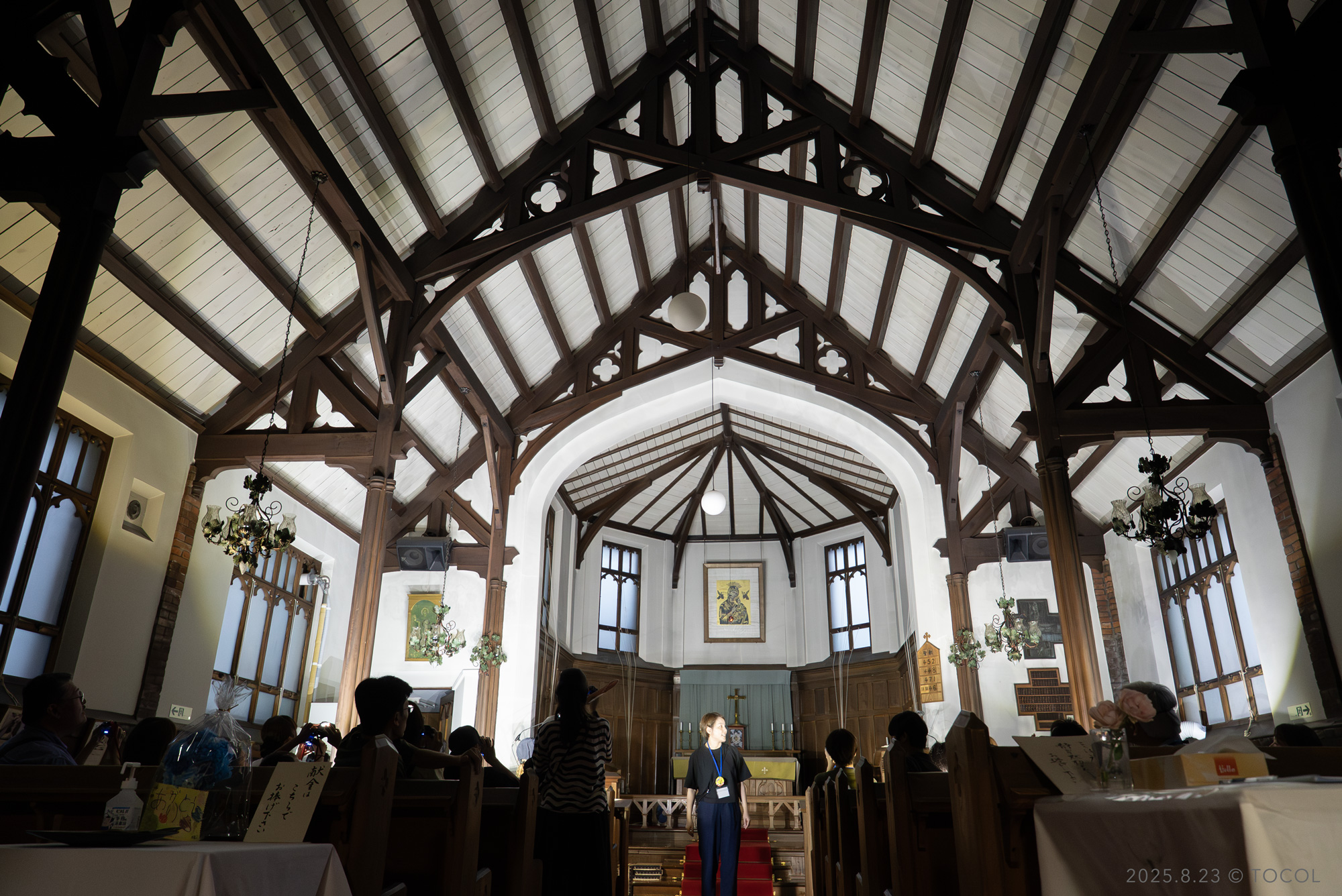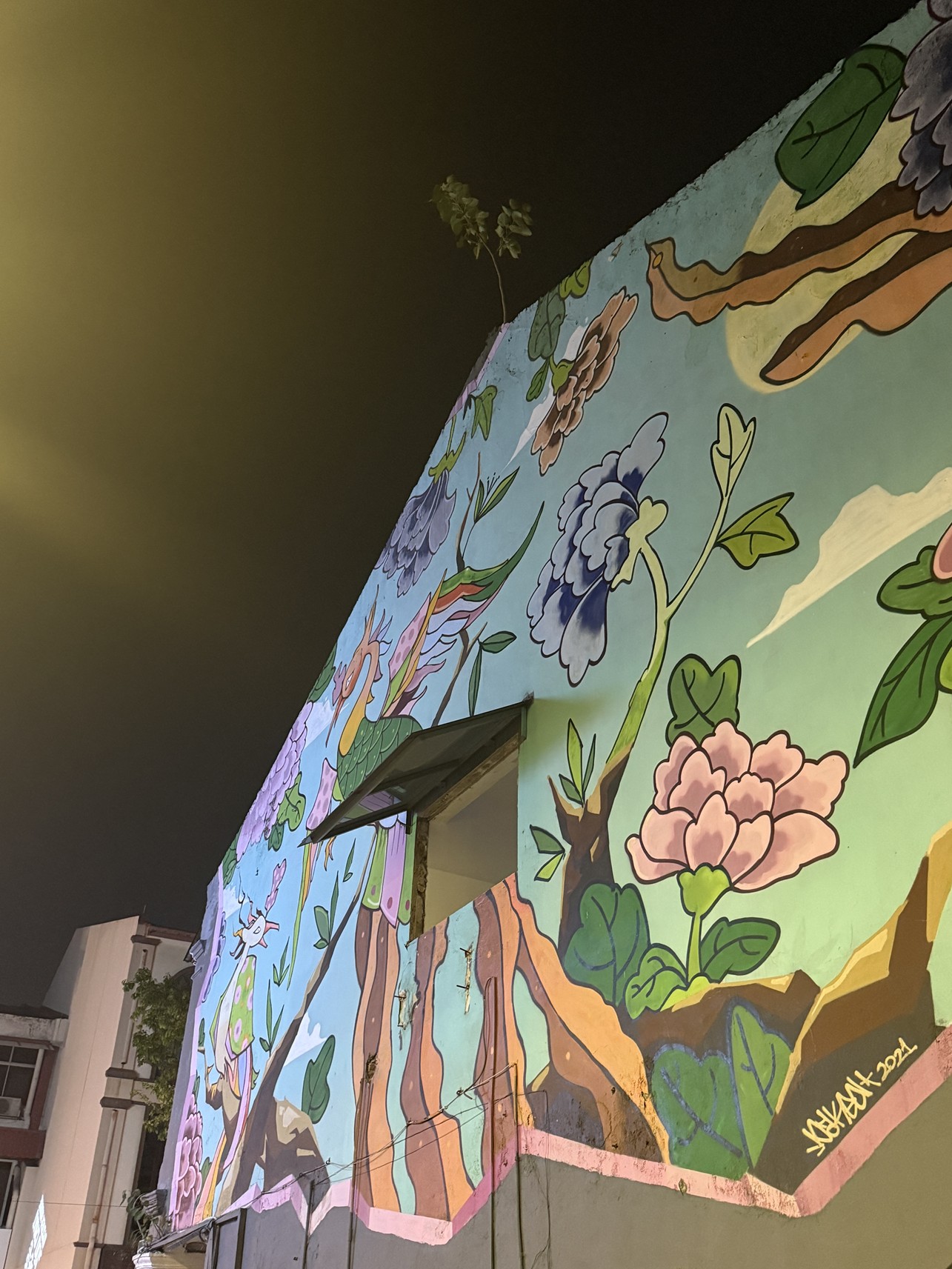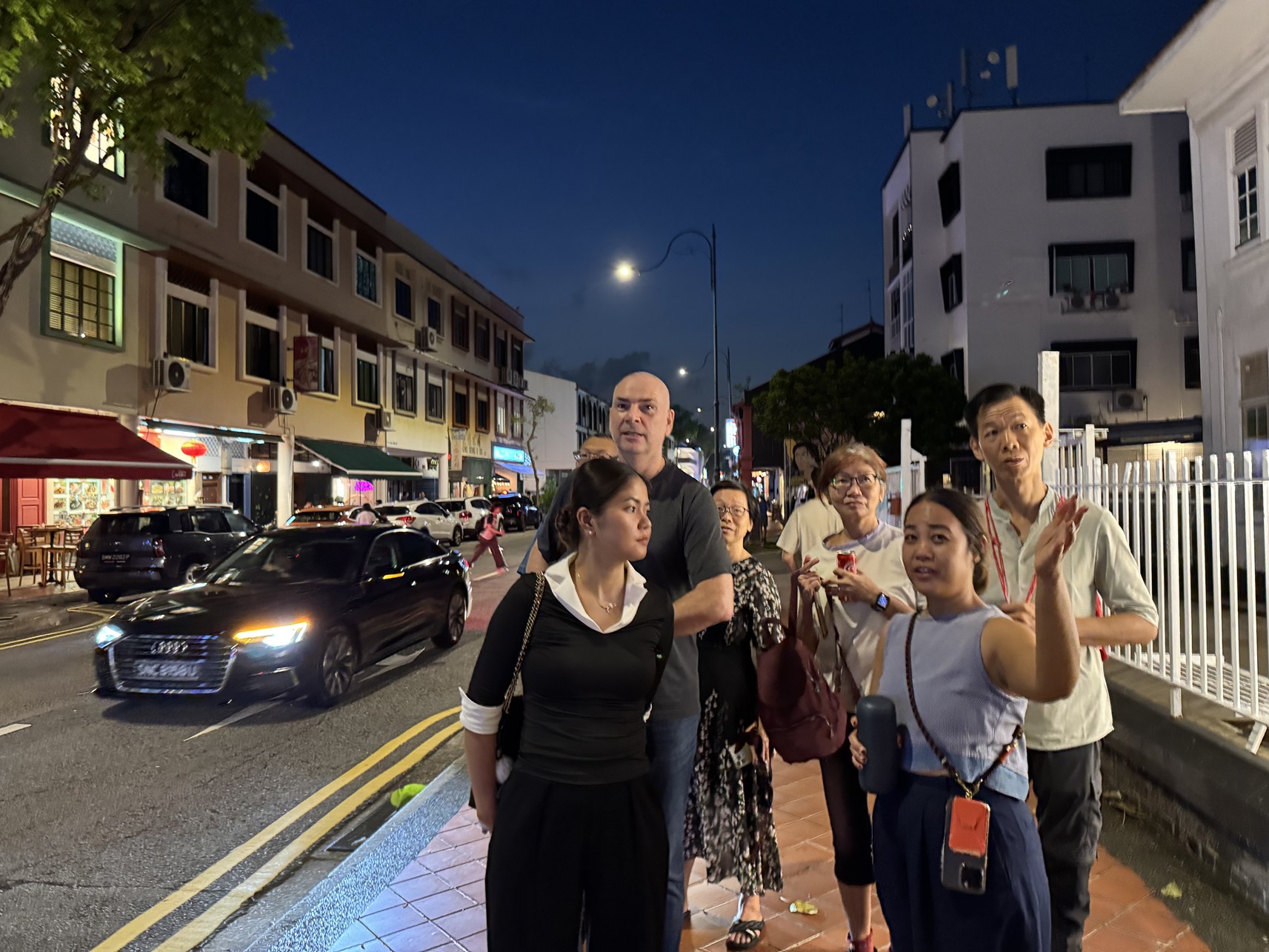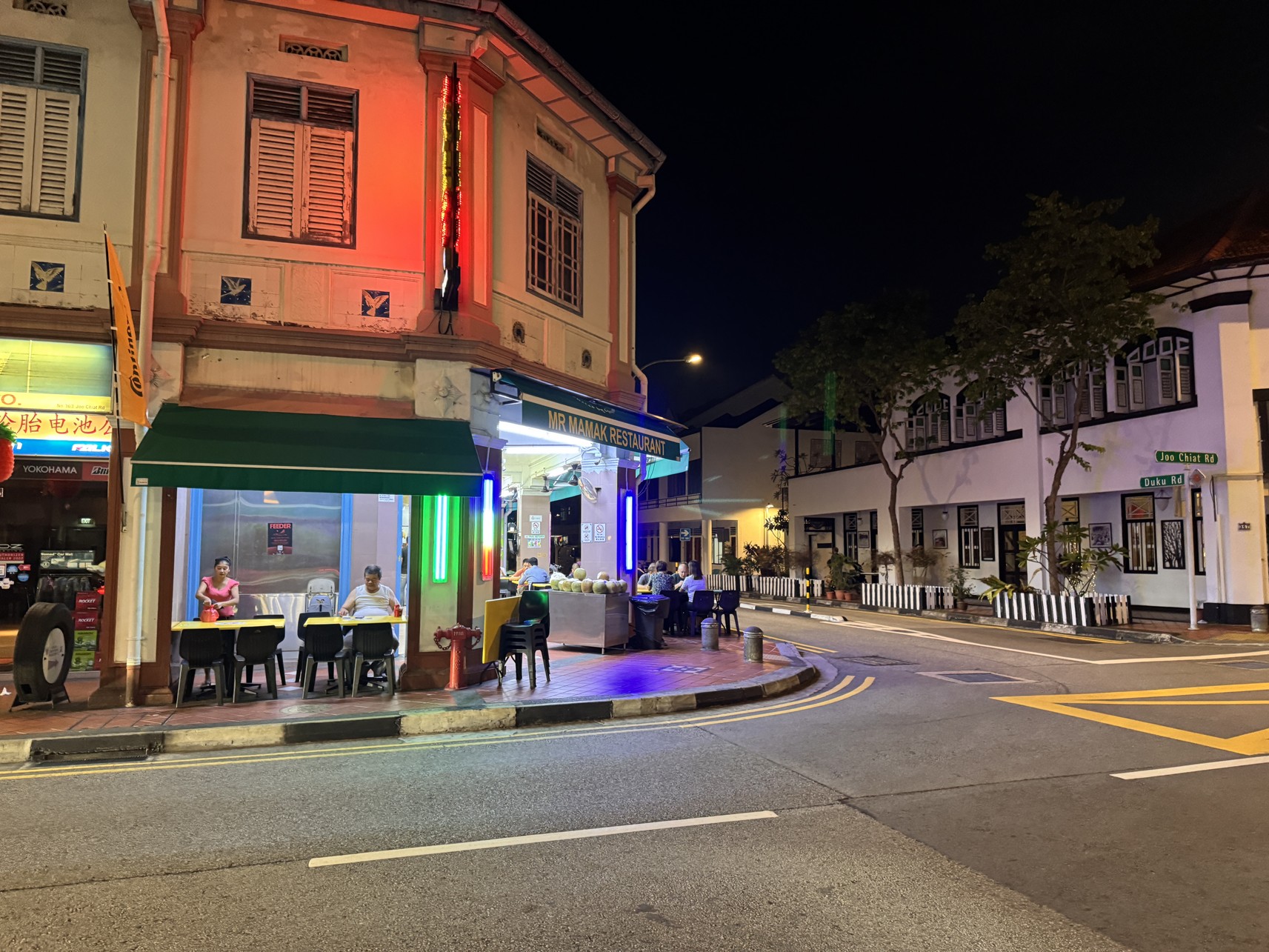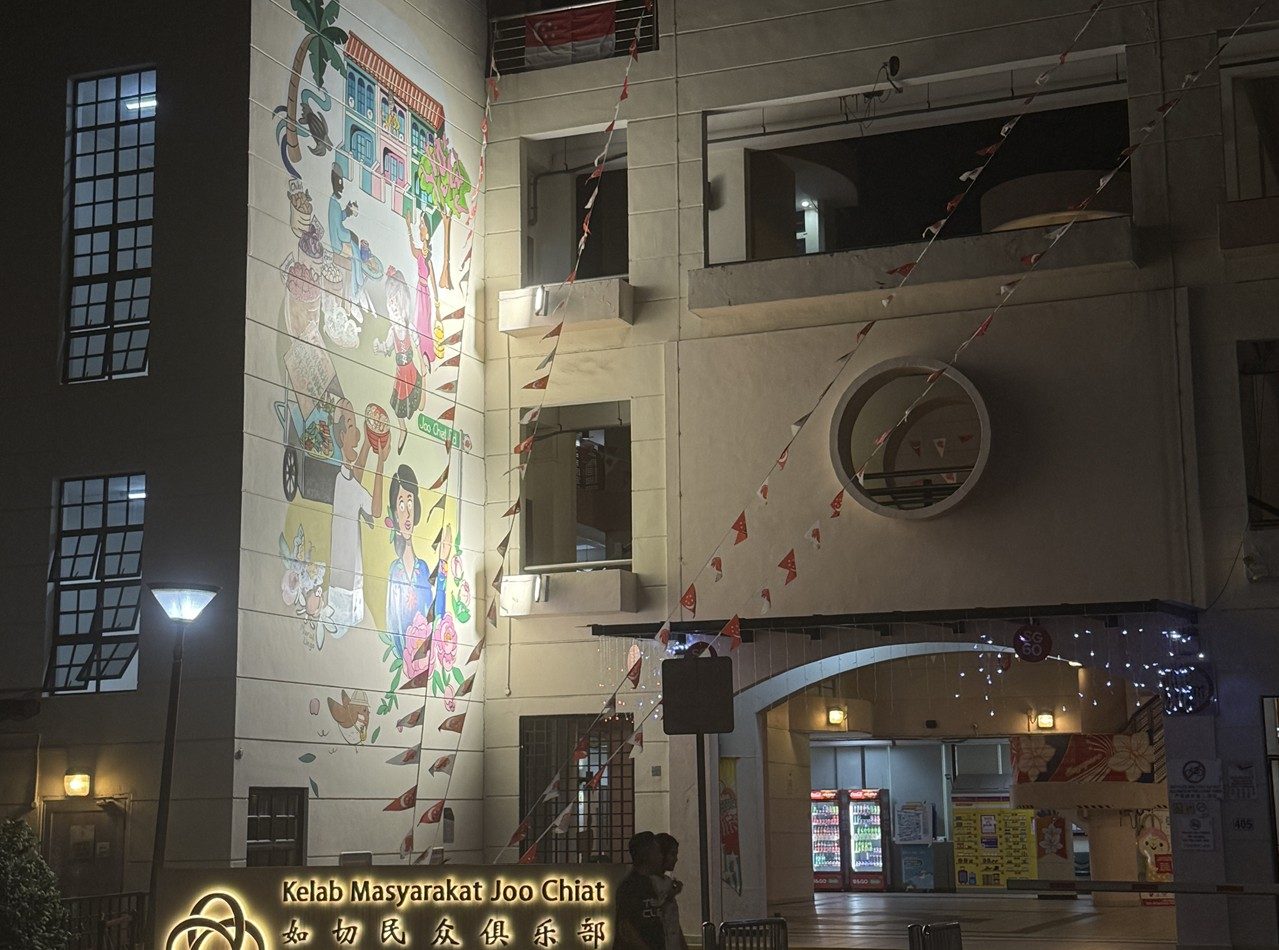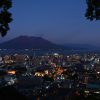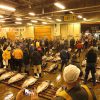Date of Issue: September 19, 2025
・Activity 1/ Visiting Tanteidan in Aomori(2025.08.21-08.23)
・Activity 2/ City Night Walk in Katong–Joo Chiat, Singapore(2025.07.18)
Visiting Tanteidan in Aomori
Tanteidan Jr. Kids Light Odyssey
2025.08.21-08.23 Kayo Sasamoto + Noriko Higashi
At the request of the incorporated association TOCOL, we held children’s workshops in three locations in Aomori Prefecture: Nanbu Town, Hachinohe, and Hirosaki. 20 to 30 children participated in each location, and with flashlights in hand, they conducted a Night Walk Survey and lighting experiments.
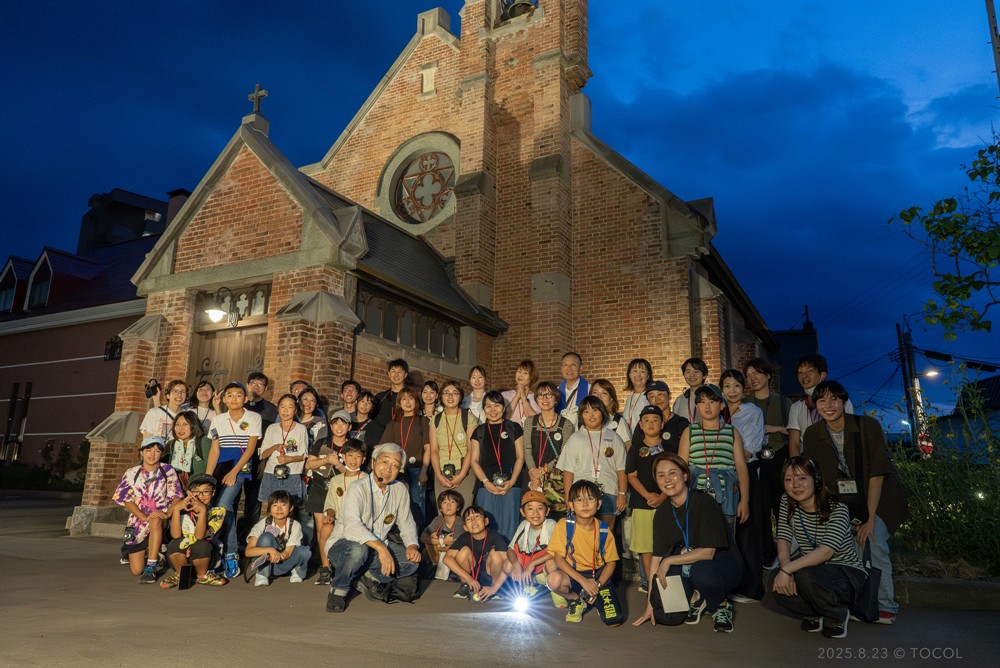
For three consecutive days in the middle of summer, from August 21-23, we held children’s workshops in Nanbu Town, Hachinohe City, and Hirosaki City in Aomori Prefecture. This workshop was held at the request of the incorporated association TOCOL. They had heard there weren’t many design-related workshops in the area and asked the Lighting Detectives to come and hold one. Since it was during summer vacation, each session was fully booked with 20 to 30 children. Parents also actively participated, and in some sessions, there were more questions from the adults than from the children. Before each Night Walk Survey, the children also got to try painting the traditional Aomori craft of Kingyo Neputa (a goldfish-shaped lantern), so the workshops were packed with content. Even though the sessions were long, from 3 p.m. to 8 p.m., the children participated enthusiastically.
■Nanbu Town, Where Darkness Remains
Nanbu Town is a district located about a 30-minute drive inland from Hachinohe, and it’s an area where a good deal of darkness remains. Here, the workshop wasn’t just about finding lighting heroes and villains while walking around. It also focused on how dark a place can be without streetlights and what you can notice in the dark.
On a completely dark path behind a cemetery, where it was difficult to see our feet, the distant shops and streetlights served as comforting beacons of light, like a sign of hope. The children, who don’t usually walk on dark roads at night, were a little nervous and timid, even with many adults around them.
After we got out of the dark path, everyone looked relieved and their energy was restored. We also experienced the difference in impression by illuminating an old white-walled building with two different color temperatures. The slightly higher, whiter color temperature seemed to be more popular.
We heard some very keen and insightful questions from the children, such as “Why do lights make
people feel safe?” and “Which travels farther, orange light or white light?” It made for a very fun
session.
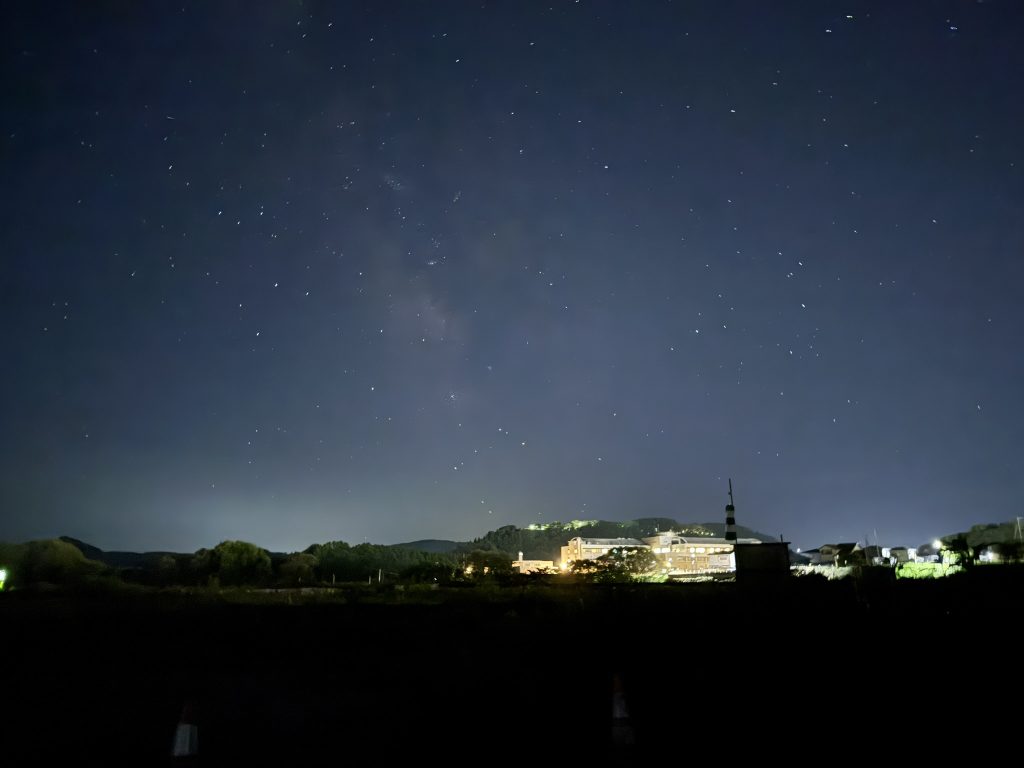
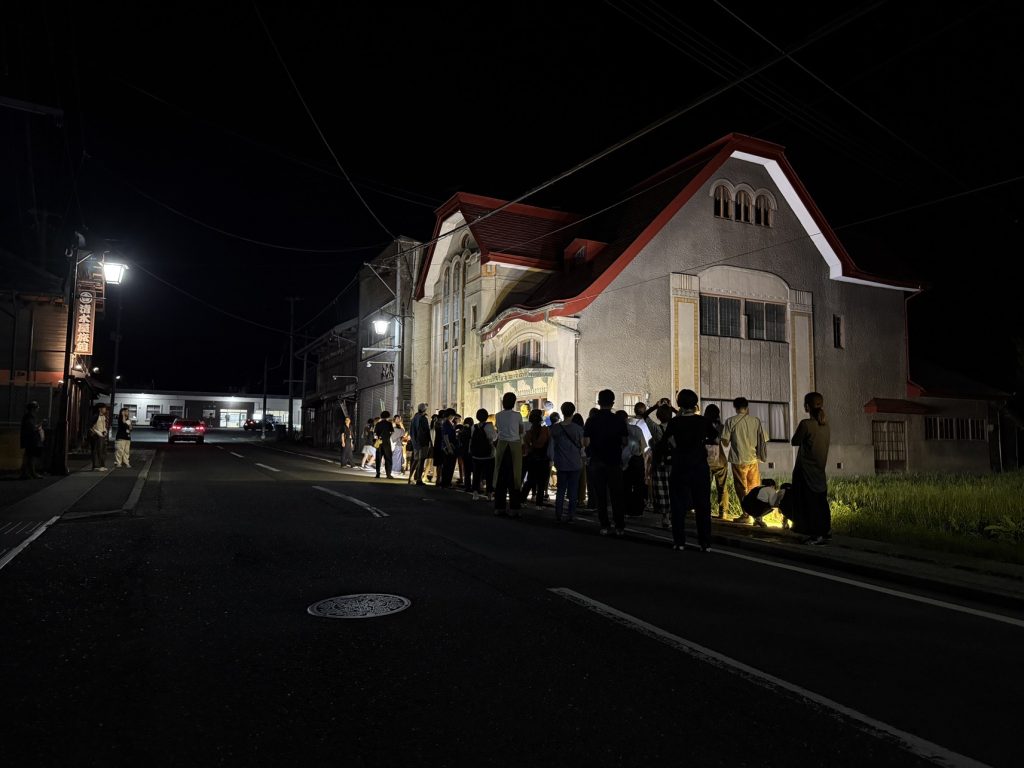
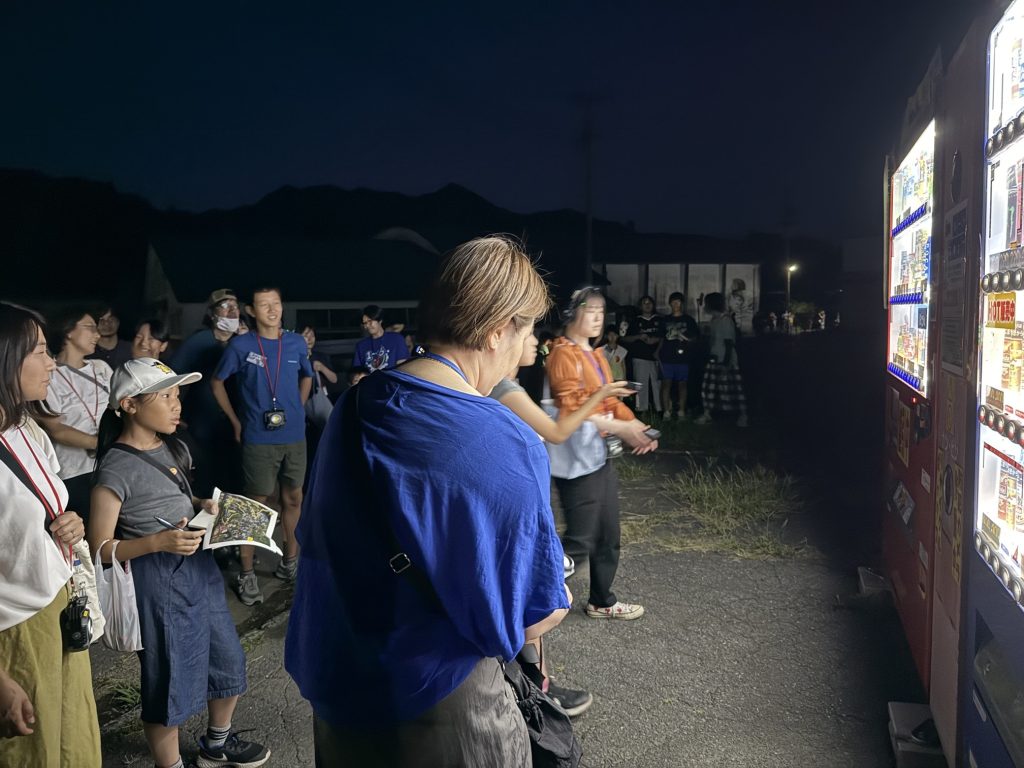
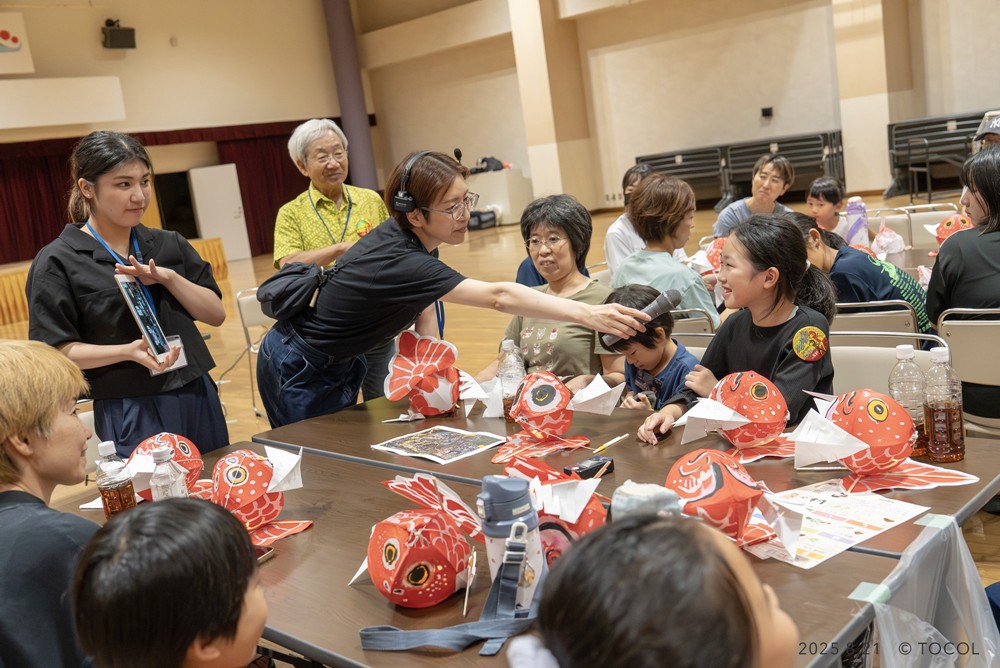
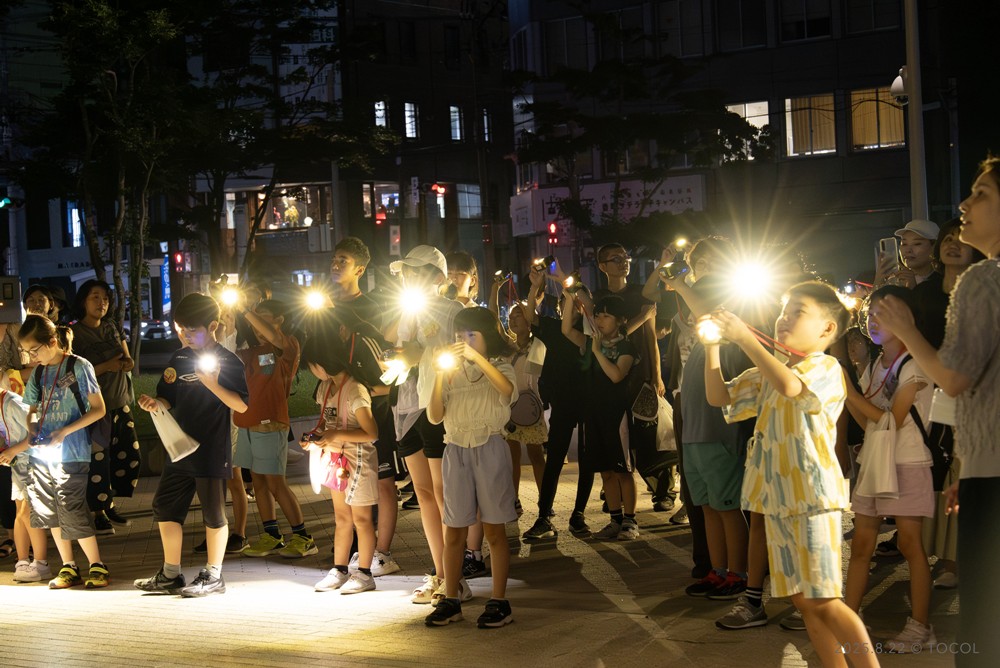
■A Lively Downtown vs. a Pitch-Black Shrine’s Backyard
Day two of the children’s workshop took place in Hachinohe. It was a downtown area on a Friday night, and we were a bit worried about walking as a large group, but thanks to the lead of our student volunteers from local universities and high schools, we were able to conduct our Night Walk Survey smoothly. During the first half, we walked through the bustling downtown, which was full of lighting elements like the color-changing facade lighting of pachinko parlors, neon signs of izakayas, red lanterns, and media screens. In the second half, we walked through a slightly darker area, carrying flashlights with changeable color temperatures.
We also conducted lighting experiments, illuminating the white walls of the Hachinohe Art Museum, a stone monument, and the giant trees in the pitch-black forest behind a shrine. The intense brightness of the media screens, which they usually don’t pay attention to, seemed to be the most memorable. Many children named them as a villain. For their heroes, many chose the lighting environment of buildings where citizens gather, which showed that these facilities are loved by the community not just during the day but at night as well.
In our light-up experiment on the white wall of the art museum, orange and white light were equally popular. For the green trees, however, the white light seemed to be the clear favorite.
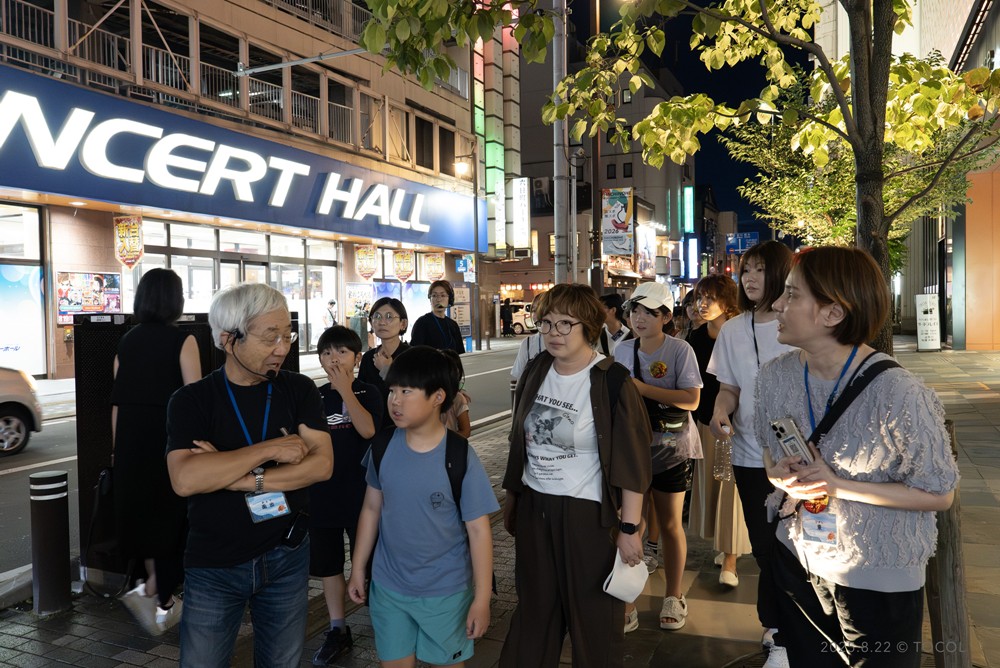
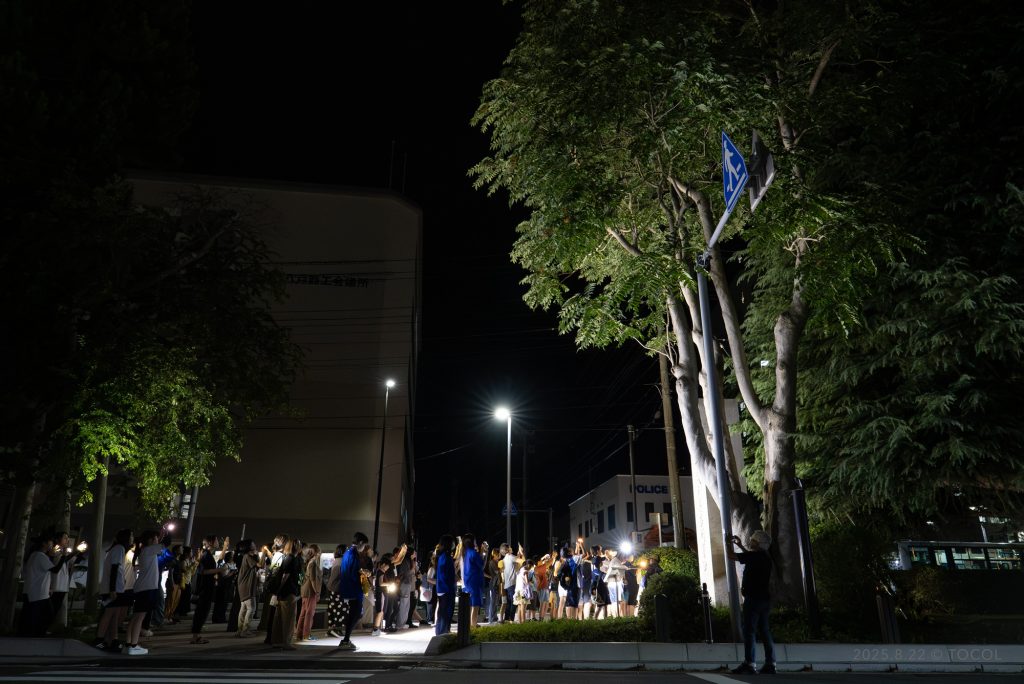
■Hirosaki, a City of Old-World Charm
In Hirosaki, we conducted a Night Walk Survey around two churches built in the Meiji and Taisho eras, a train station and trains with a Showa-era feel, and the red-brick Hirosaki Museum of Contemporary Art. With the kind permission of the priest, we were allowed inside one of the churches to conduct some interior lighting experiments.
The church had high ceilings, stained-glass windows, and white walls. We had them turn off the lights to see what the lighting environment would be like with only natural light. We also did many experiments that would normally be impossible, like turning on only the altar lighting, or turning the altar lights off and only using the pendants over the seating area.
At the Hirosaki Museum of Contemporary Art, we tried lighting up the brick walls with both orange and white light. We also illuminated the green lawn in the same way. I believe the children realized that even with the same illuminance, a change in color temperature completely alters how everything looks. (Noriko Higashi)
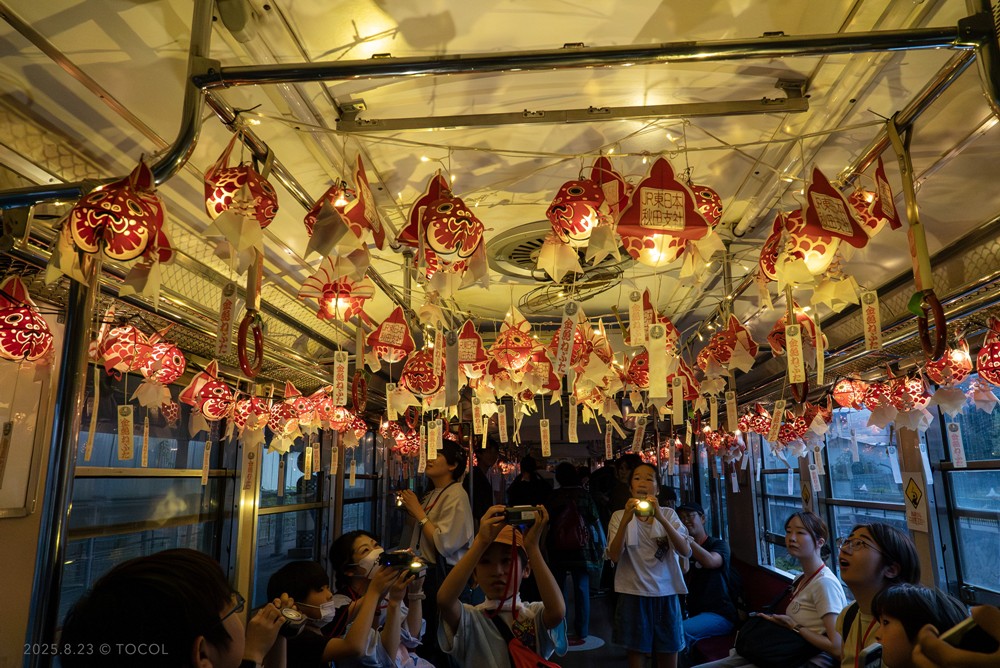
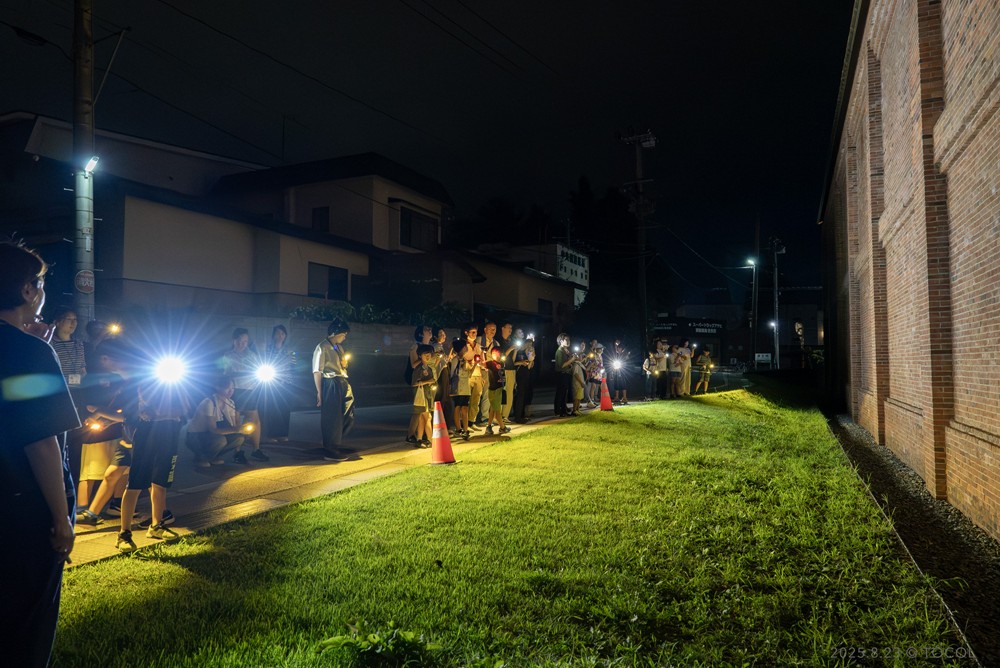
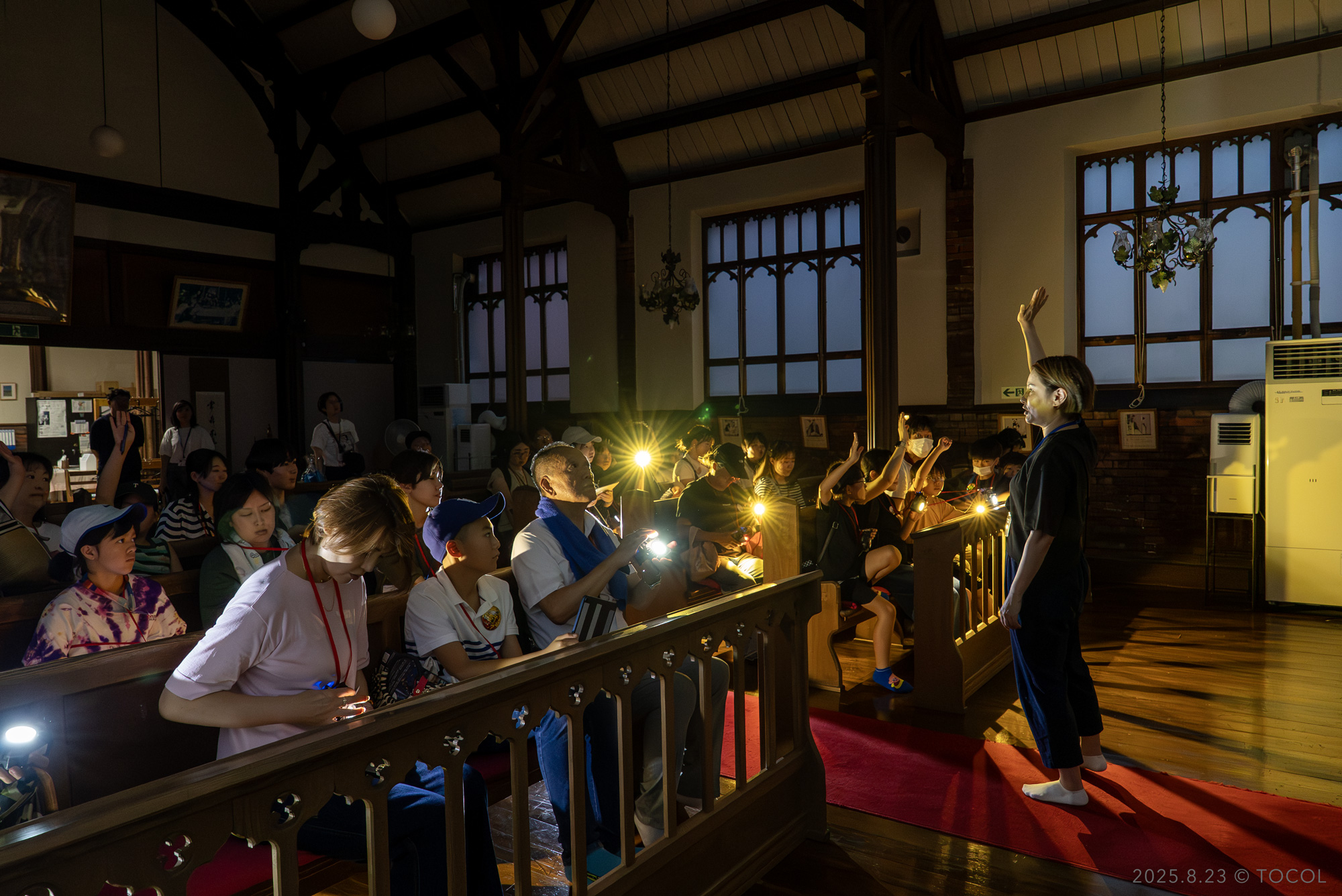
■Reflections
This “Kids Light Odyssey” was a catalyst for a big change that children don’t get to experience in their daily lives. Children who are usually hesitant to speak up shared their thoughts in their own words, saying things like, “I feel like white light travels farther,” or “The dark path was scary, but the mountain that I could faintly see looked like it was floating.” This was a clear sign of their growth. When they put themselves in the darkness and truly felt the meaning of light, the sparkle in their eyes was also a moment when they took a step toward the future.
Additionally, nearly 30 high school and university students participated as youth leaders. They didn’t just serve as assistants. While guiding the children, they were also exposed to the “attitude of always delighting the participants” that chief Mende demonstrated. As a result, they themselves grasped the essence that “lighting brings architecture to life” alongside the children.
On the other hand, we also faced some challenges with the management of the workshops. We were so busy with securing participants and running the sessions that we couldn’t fully return to our original stance of “guiding through questions.” What’s important is not the “success” of the outcome, but that each person takes a lesson home with them. We were able to relearn this essential truth from chief Mende’s attitude. Next time, we aim to create an atmosphere where the children can take the lead in discussions. While the presence of parents provides a sense of security, it also has a side effect where children unconsciously become concerned about “what their parents think.” By taking a step beyond that and accumulating experiences of “doing it themselves” with the youth leaders, we believe their independence and confidence will be fostered. The experience of cooperating with peers and persevering to the end, even when facing failure, is what leads to real learning. And when youth leaders support them closely and grow together with them, it will lead to the development of the next generation of leaders.
This three-day initiative created a learning environment in the community that uses “light” as a medium. I sincerely hope that we can continue to deepen this experience, where children and young people learn from each other and light a small flame to illuminate the future, without letting it fade away. (TOCOL Kayo Sasamoto)
Photo marked with a ☆: Taken by TOCOL
Night Walk in Katong–Joo Chiat, Singapore
Singapore Archifest 2025
2025.07.18 Josephine Kwan
As part of the annual architecture festival in Singapore, Archifest 2025 invited us to host a special Lighting Detectives session in the East Coast.
The Katong–Joo Chiat district, celebrated for its rich history, heritage, vibrant food scene, and evolving lifestyle, became our exploration ground.
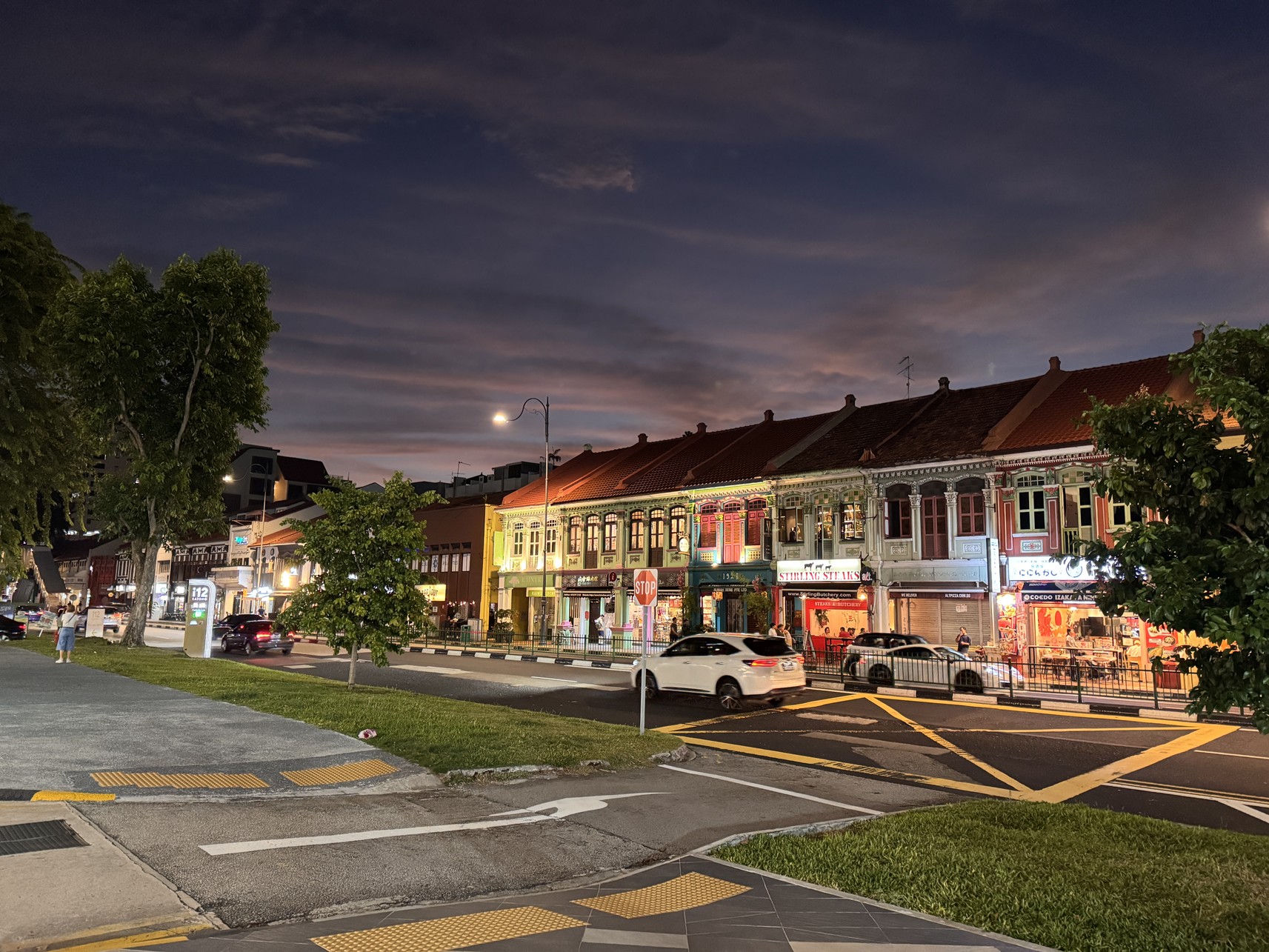
■ Introduction
With a total of thirty participants comprising both industry professionals and those from outside the field, we embarked on two routes to uncover the night time charm of this Peranakan cultural enclave — a place whose unique character and timeless beauty continue to capture the hearts of many.
■ History of Katong-Joo Chiat District
In the early 20th century, members of the wealthy Peranakan community began moving out of the crowded city areas such as Telok Ayer, Ann Siang, and Tanjong Pagar. They sought peaceful, more spacious suburban residences in the East Coast — particularly in Katong-Joo Chiat — where land was more affordable and the sea was close by.
In Katong-Joo Chiat, Peranakans built rows of houses and shophouses featuring distinctive Peranakan architectural details: intricate façade tiles, vibrant colours, ornate wood carvings, and floral motifs. Many of these homes served a dual purpose — both as family residences and as small businesses, such as beadwork ateliers, bakeries, and houseware shops.
As more Peranakan families settled in, Katong-Joo Chiat blossomed into a thriving cultural enclave. Temples, kopitiams (coffeeshops), tailors, and food vendors reflected the vibrant Nyonya traditions, while festivals, weddings, and rituals filled the homes and streets with colours, fragrances, and songs.
■Notable Architectures and Street Art
Katong-Joo Chiat is best known for its colorful rows of conserved Peranakan shophouses, especially along Koon Seng Road, where pastel façades and intricate ceramic tiles showcase a unique blend of Chinese, Malay, and European influences. The area is also dotted with Art Deco landmarks, such as Grafunkt’s Showroom, the Red House Shophouses and Sri Senpaga Vinayagar Temple.
Adding to its charm, with its photogenic streetscapes and rich Peranakan charm, Katong-Joo Chiat gained momentum on social media. The district quickly became a hotspot for lifestyle photography, indie boutique branding, and the coffee culture scene. Today, young locals and creatives flock here for its eclectic mix of cafes, bars and unique visual backdrops.
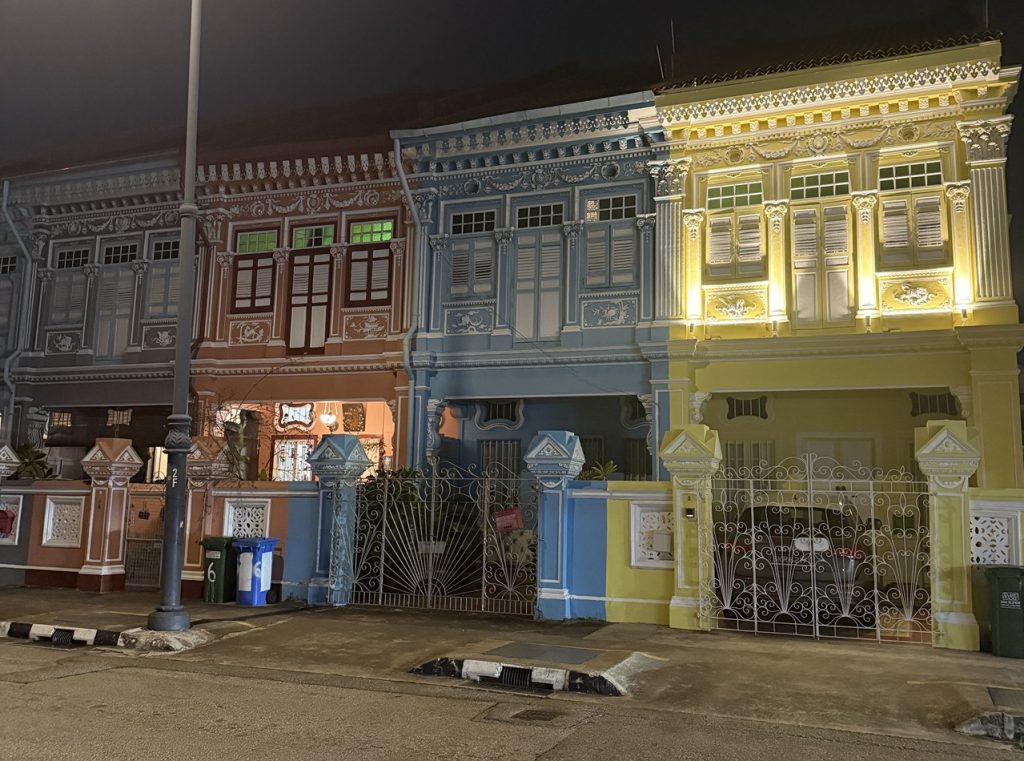
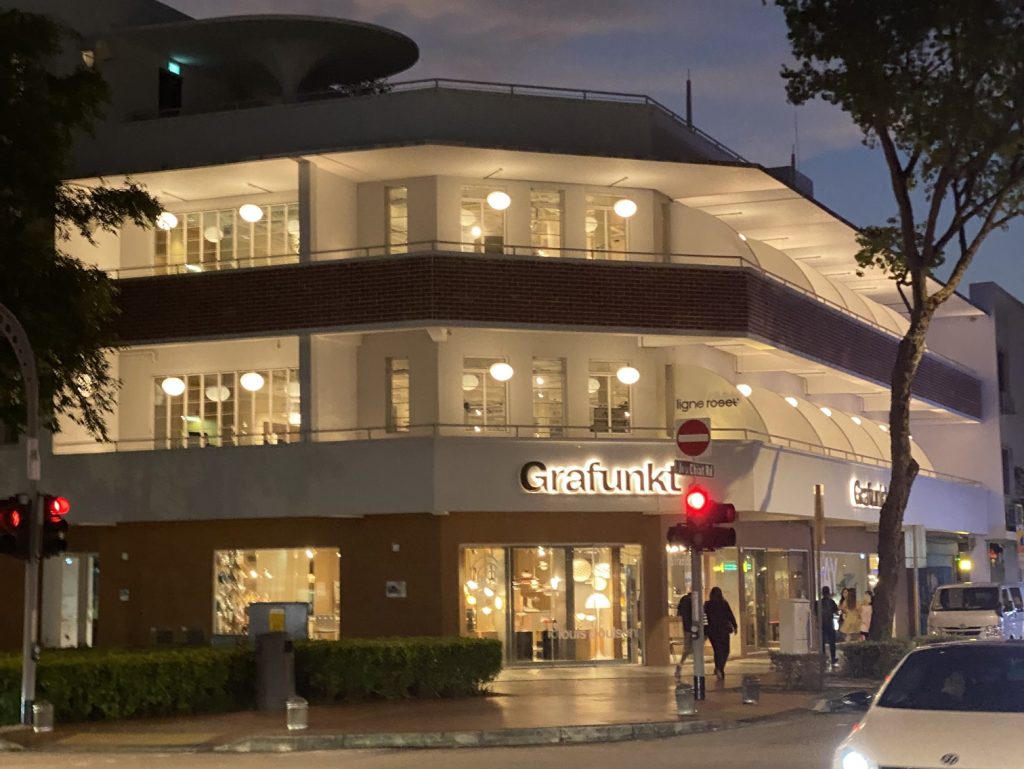
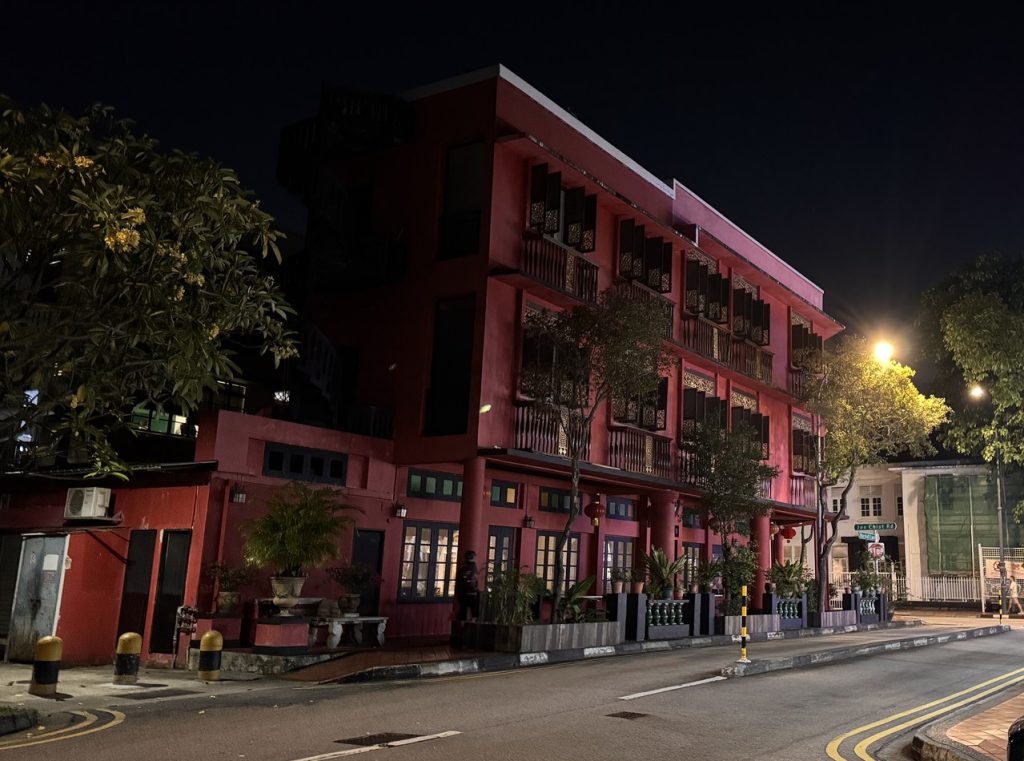
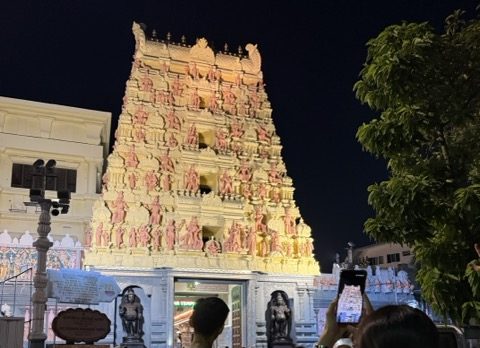
■ Lighting Detectives at Katong-Joo Chiat
On 18 July 2025, Friday, at 7pm, we gathered at the ArchiHouse in Katong-Joo Chiat for our latest Lighting Detectives session. Together with the participants, LPA explored the night scenes of Katong-Joo Chiat, uncovering both delightful highlights and areas where lighting could be improved.
Led by Tan and Mayumi, participants split into two groups to journey through the district’s eclectic mix of shops and residential developments. Along the way, they were encouraged to identify their “Heroes” and “Villains” lighting, as well as their favourite storefront and F&B lighting designs. The experience revealed how Katong-Joo Chiat’s vibrant Peranakan colours transform at night — sometimes enhanced by illumination, other times left in shadow.
In Mayumi’s team, discussions circled around whether these cultural features truly required lighting. While accentuation might draw more visitors, it could also disturb the quiet rhythm of residential life. The team also noted that many of Katong-Joo Chiat’s smaller alleys were dimly lit — perhaps an opportunity for activation, though the question of necessity remained.
Meanwhile, Tan’s team encountered brightly lit facades with noticeable spill light. Though eye-catching, some participants felt the intensity was excessive. Their journey highlighted how renowned architectural elements can evoke diverse impressions depending on lighting treatment.
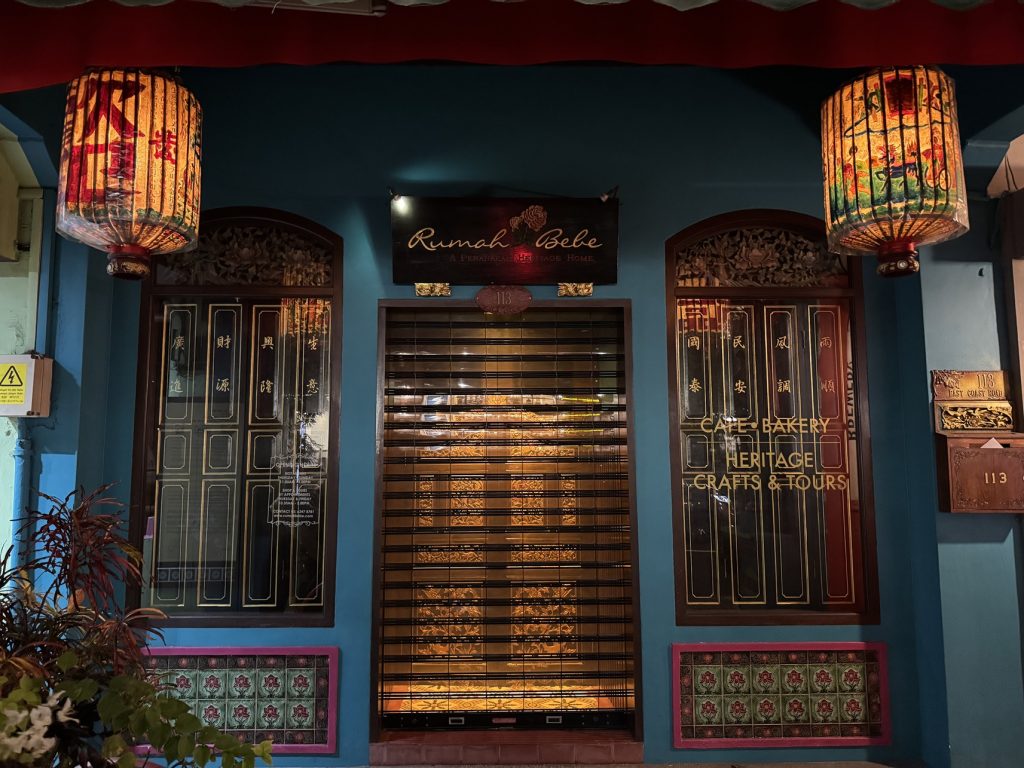

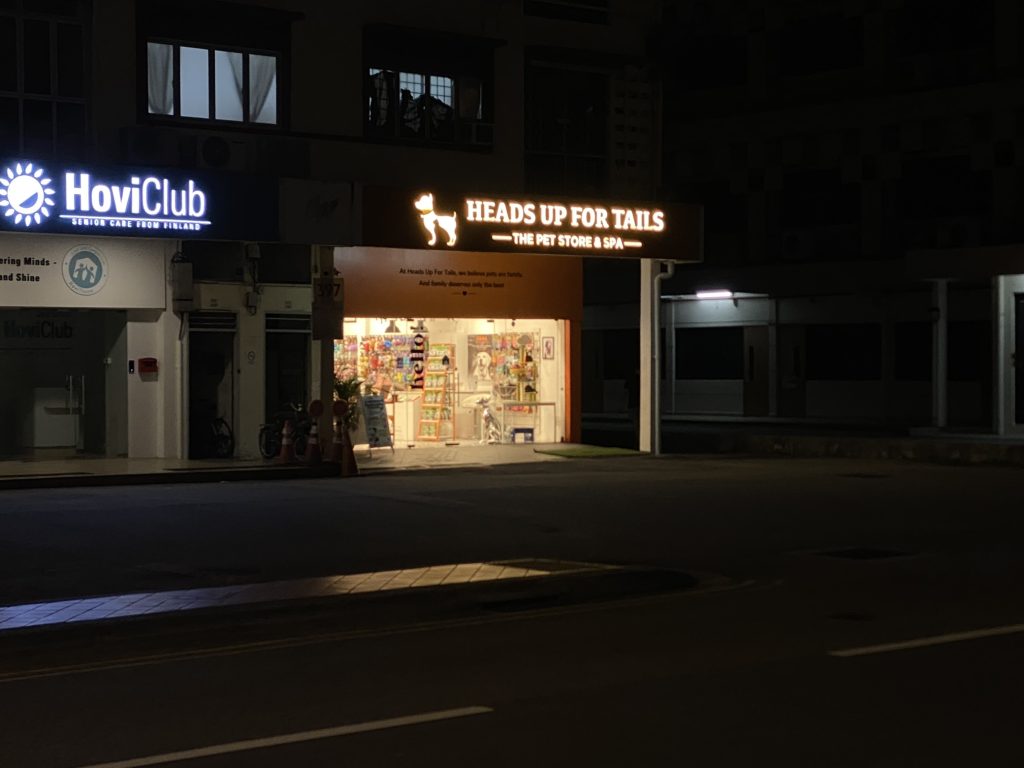
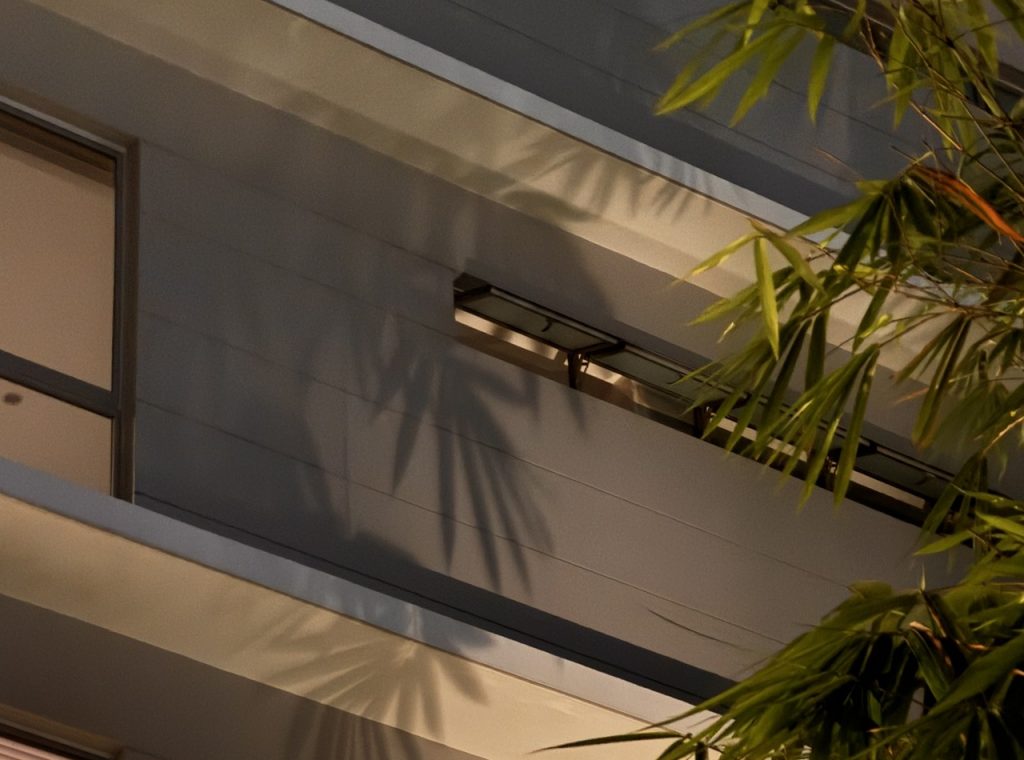
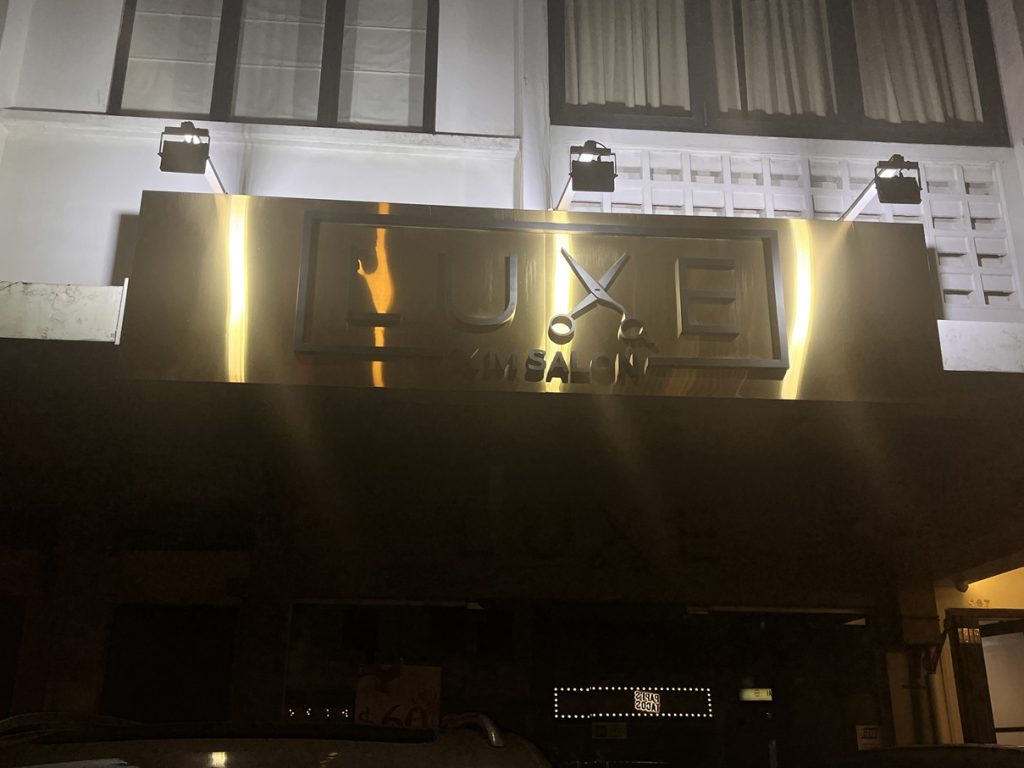
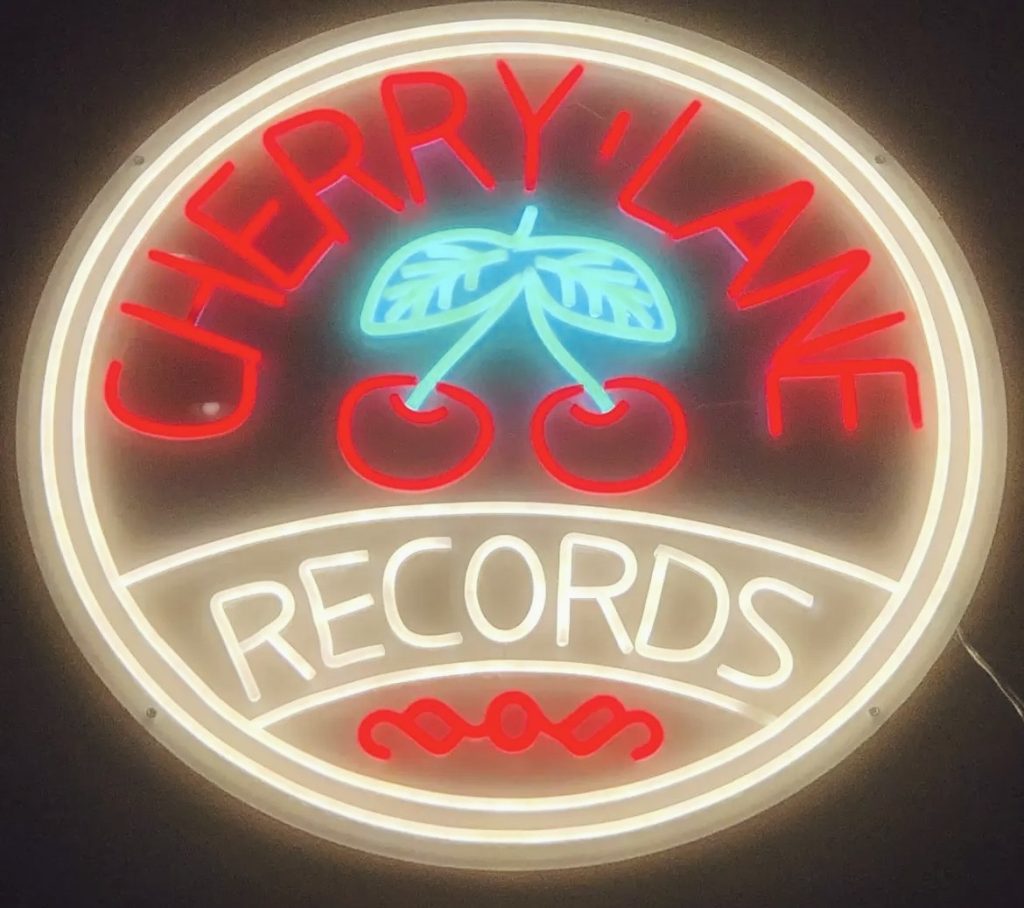

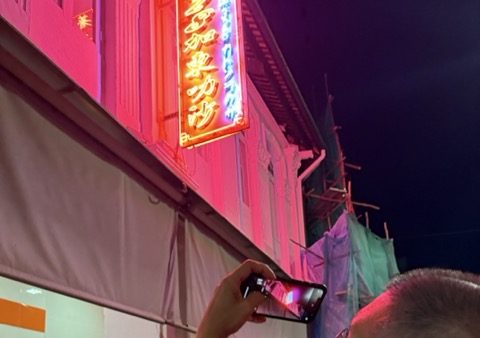
The walk showcased a wide spectrum of practices — some aligned with Singapore’s lighting guidelines, others diverging — resulting in a rich patchwork of nighttime atmospheres. As some areas evoked memories of the past, participants reflected on what Katong-Joo Chiat used to be, sharing stories of its transformation and how it has evolved into what we see today.
We concluded back at ArchiHouse, where participants shared their observations and reflections. The session affirmed that lighting plays a key role in expressing the uniqueness of Katong-Joo Chiat and shaping how people experience the district after dark.
Head over to our Lighting Detectives page to discover more of our explorations and stay tuned for upcoming activities you can join. We look forward to seeing you at the next walk! (Josephine Kwan)
